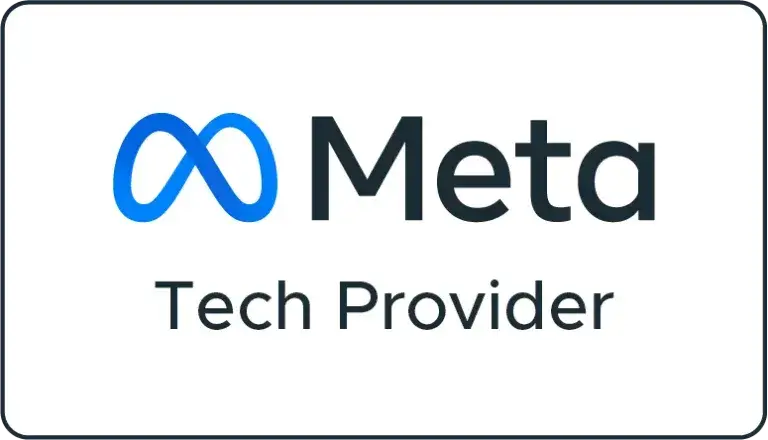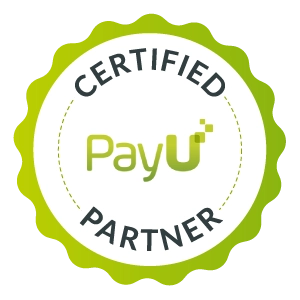Introduction
In today’s digital era, the ability to attract visitors to your website can often be the difference between business success and stagnation. While there are multiple methods to drive traffic, understanding how to increase website traffic organically remains one of the most effective and sustainable strategies for long-term growth. Organic traffic, generated through search engines without the aid of paid advertising, is highly valued for its credibility and cost-effectiveness.
Understanding Organic Traffic
Organic traffic refers to visitors who land on your website as a result of unpaid (“organic”) search results. It is distinct from traffic generated through paid ads or non-search engine sources like social media. Organic traffic is crucial because it is targeted; these visitors are actively searching for what you have to offer, which makes them more likely to convert into leads and customers.
Importance of Organic Growth
Increasing your website’s organic traffic does not just mean improving your site’s visibility and reach; it also enhances your brand’s authority and trustworthiness in the eyes of both search engines and users. Websites that rank well on search engine results pages (SERPs) are often considered more credible by consumers. Moreover, organic growth strategies, such as search engine optimization (SEO), content marketing, and link building, bring compounding returns over time, making them incredibly cost-effective compared to paid advertising campaigns.
By mastering how to increase website traffic organically, businesses not only reduce their dependence on paid advertising but also build a strong online presence that can withstand changes in marketing trends and search engine algorithms. As we delve deeper into this guide, we will explore the essential strategies and techniques that can help you enhance your website’s organic traffic and, by extension, its overall digital marketing success.
Fundamental SEO Practices
To effectively increase your website traffic organically, foundational SEO practices must be implemented with precision and foresight. These practices ensure that your website not only attracts more visitors but also communicates effectively with search engines to improve your rankings.
Keyword Research
Keyword research is the cornerstone of any SEO strategy and a critical first step in understanding how to increase website traffic organically. By identifying the keywords and phrases that your target audience is searching for, you can tailor your content to meet their needs and answer their questions.
- Identifying Target Keywords: Use tools like Google Keyword Planner, Ahrefs, or SEMrush to find relevant keywords with good search volumes and achievable competition levels.
- Search Intent: Understand the intent behind the keywords—whether users are looking to buy, to learn, or to solve a problem. Tailoring content to match this intent increases the likelihood of attracting qualified traffic.
- Long-Tail Keywords: Focus on long-tail keywords, which are less competitive and more specific, often resulting in better conversion rates due to their targeted nature.
On-Page SEO Techniques
On-page SEO refers to the optimizations you can apply directly to your website pages to improve their rankings in the search engines. Here’s how to increase website traffic organically by enhancing on-page elements:
- Title Tags and Meta Descriptions: These are critical HTML elements that provide an opportunity to insert your target keywords and engage users on the SERPs. Ensure they are compelling and accurately describe the page content.
- Header Tags: Organize content effectively using header tags (H1 to H6), with the primary keyword included in the H1 tag.
- Image Optimization: Use relevant images and optimize them with proper file names and alt text to improve your page’s visibility in image searches.
Content Optimization
The quality of your content plays a significant role in retaining the traffic that comes to your site and converting visitors into customers.
- High-Quality Content: Create content that is informative, well-written, and engaging. It should provide real value to your audience, exceeding what competitors offer.
- Content Structure: Structure your content for readability—use short paragraphs, bullet points, and plenty of white space to improve user engagement.
- Internal Linking: Use internal links to connect your content and guide users through your website, which helps distribute page authority and improve rankings.
By implementing these fundamental SEO strategies, you set a solid foundation for increasing your website’s organic traffic. Not only do these tactics help improve your site’s visibility and user engagement, but they also enhance your reputation with both users and search engines.
Enhancing Website Usability
Optimizing your website’s usability not only supports SEO efforts but also enriches the user experience, encouraging longer visits and more frequent returns. Here’s how to increase website traffic organically by focusing on usability enhancements:
Mobile Optimization
In today’s mobile-first world, ensuring your website is optimized for mobile devices is crucial. Mobile optimization affects not only user experience but also search engine rankings, especially after Google’s shift to mobile-first indexing.
- Responsive Design: Implement a responsive web design that automatically adjusts the layout and content based on the device’s screen size.
- Touchscreen Readiness: Ensure that all buttons, links, and navigational elements are easy to interact with on touch screens.
- Mobile Speed: Optimize images and minify code to enhance loading times on mobile devices, as speed plays a significant role in mobile user satisfaction.
Site Speed Improvement
A fast-loading website is essential for retaining visitors and improving overall engagement, which directly influences organic search rankings.
- Optimize Images: Reduce file sizes without compromising quality to decrease loading times.
- Leverage Browser Caching: Store elements of your site in users’ browsers to speed up loading times on subsequent visits.
- Minimize HTTP Requests: Reduce the number of elements on your pages to enhance load speed.
User Experience (UX) Design
Good UX design helps in keeping users engaged with your content longer and reduces bounce rates, which can positively impact your organic rankings.
- Intuitive Navigation: Design your site’s navigation to help users find information quickly and easily.
- Content Accessibility: Ensure that your content is easy to read and access. Use headings, subheadings, and lists to break down information into manageable sections.
- Engagement Elements: Include interactive elements such as buttons, links, and engaging visuals that encourage user interaction and prolong their stay on your site.
By enhancing the usability of your website, you not only foster a better user experience but also support your SEO efforts. Sites that are easy to navigate, fast to load, and pleasant to use are more likely to retain visitors and convert them into recurring users, thereby increasing organic traffic.
Advanced SEO Strategies
To further drive organic traffic, advanced SEO techniques must be employed. These strategies are crucial for overcoming competitive barriers and improving your search visibility on more complex levels.
Building Quality Backlinks
Backlinks are a critical component of SEO as they signal to search engines that other websites consider your content valuable enough to link to. Here’s how to increase website traffic organically by acquiring quality backlinks:
- Guest Blogging: Contribute high-quality content to reputable sites in your industry. This not only provides a backlink but also exposes your brand to a broader audience.
- Content Marketing: Create compelling, unique, and useful content that naturally attracts backlinks. Infographics, research studies, and comprehensive guides are particularly effective.
- Relationship Building: Engage with industry influencers and bloggers to build relationships that can lead to organic link-building opportunities.
Technical SEO
Technical SEO involves the more complex aspects of SEO strategy, which help improve the site’s readability by search engines and provide a good user experience:
- Site Architecture: Structure your website in a way that search engines can easily crawl and index your content. A clear hierarchy and logical structure are key.
- Mobile Friendliness: Ensure your site is fully responsive, as mobile usability is a ranking factor for Google.
- Structured Data: Implement structured data (schema markup) to help search engines understand your content better and enhance your listings in search results.
Local SEO
For businesses serving specific geographic areas, local SEO is essential. It improves visibility among local searches, which often carry high purchase intent:
- Google My Business: Optimize your Google My Business listing to appear in local search results and Google Maps.
- Local Keywords: Incorporate location-specific keywords into your site’s content, such as the city or neighborhood where you operate.
- Local Backlinks: Gain backlinks from local news sites, community blogs, and other local businesses to enhance your local relevance.
Implementing these advanced SEO strategies requires a blend of technical knowledge, creative content creation, and proactive outreach. However, the effort is well worth it as it can significantly enhance your site’s organic visibility and traffic.
Leveraging Content Marketing
Content marketing is a powerful tool in your SEO arsenal, playing a crucial role in how to increase website traffic organically. By creating a varied content portfolio, you can attract a broader audience, engage users more deeply, and encourage them to spend more time on your website, which positively influences SEO.
Blogging and Article Writing
Regularly updating your website with fresh, relevant content is essential for keeping your audience engaged and giving search engines new content to index. Here’s how to harness the power of blogging:
- Target Long-Tail Keywords: Focus on long-tail keywords in your blogs, which have less competition and cater to more specific audience queries.
- Answer User Questions: Create content that addresses common questions or problems your target audience faces. Use tools like Answer the Public to find popular questions.
- Content Depth and Variety: Publish in-depth articles that provide comprehensive information on topics related to your industry. Variety in your content types, such as listicles, how-to guides, and thought leadership articles, can cater to different user preferences and search intents.
Video Content
Video is increasingly important in digital marketing strategies, known for its ability to increase engagement and time spent on site.
- Create How-To Videos: Produce tutorial videos that help your audience solve specific problems or use your products, which can also be optimized for search on platforms like YouTube.
- Embed Videos on Your Site: Incorporate these videos into relevant blog posts and pages to provide a richer user experience and keep visitors on your site longer.
- Optimize Video SEO: Use descriptive titles, tags, and descriptions that include your focus keywords to improve visibility in video search results.
Social Media Integration
While social media does not directly contribute to SEO rankings, it influences factors that do, such as traffic volume and site engagement.
- Promote Content on Social Channels: Use your social media platforms to share new content, driving traffic to your site and increasing content visibility.
- Engage with Your Audience: Actively engage with followers through comments, shares, and likes to foster community and encourage more visits to your site.
- Use Social Media for Content Research: Monitor discussions on social media to identify trending topics or content gaps in your industry, which can inform your content creation strategy.
You can significantly enhance your organic traffic by implementing a strategic content marketing plan that includes blogging, video, and social media. This multi-channel approach not only increases your digital footprint but also builds a robust online presence that attracts and retains a loyal audience.
SEO Audit Tools
Regular SEO audits are essential to ensure that your website adheres to the best practices and to identify any issues that might be hindering your performance in search results:
- Technical SEO Health: Use tools like SEMrush, Ahrefs, or Moz to conduct comprehensive audits that check for issues like broken links, improper redirects, and slow loading times.
- On-Page SEO Optimization: These tools can also help review your on-page SEO elements, such as title tags, meta descriptions, and header tags, to ensure they are optimized for your target keywords.
- Backlink Analysis: Understand the quality and quantity of backlinks pointing to your site. High-quality backlinks from reputable sites significantly boost your SEO, while poor-quality links can harm your rankings.
Adapting Based on Insights
Armed with data from these tools, you can make informed decisions about how to improve your site:
- Refine Keywords and Content: Adjust your keyword strategy based on what terms are driving traffic and conversions, and update your content to better meet user search intent.
- Enhance User Experience: If analytics indicate poor user engagement, consider redesigning elements of your site to make it more navigable and engaging.
- Improve Technical Aspects: Address any technical issues uncovered during SEO audits to enhance site performance and user experience, which are critical for SEO success.
Monitoring and analytics not only provide a snapshot of your current performance but also offer insights into potential improvements that can lead to significant increases in organic traffic.
Continuous Improvement and Updates
To maintain and grow organic website traffic, it’s essential to keep your content and SEO strategies up to date. This approach not only helps in adhering to the latest search engine algorithms but also in meeting the changing preferences and behaviors of your audience.
Content Updates and Refreshes
Keeping your content fresh is vital for retaining high rankings and attracting repeat visitors:
- Regular Content Reviews: Schedule periodic reviews of your existing content to identify pieces that are outdated, underperforming, or no longer relevant.
- Updating Information: Update statistical data, facts, links, and any information that has changed since the content was first published to keep it current.
- Improving Engagement: Enhance older content with new images, videos, infographics, or interactive elements to increase user engagement and time spent on the page.
Staying Updated with SEO Trends
SEO is a dynamic field with frequent updates to search engine algorithms and best practices. Staying informed and adaptable is crucial:
- Follow Industry Leaders and News: Keep up with SEO news through industry leaders like Moz, Search Engine Journal, and Neil Patel. This will help you anticipate and react to changes in SEO practices.
- Adopt New Techniques: As new SEO techniques and tools become available, evaluate their relevance to your strategy and consider integrating them to improve your site’s visibility.
- SEO Training and Webinars: Regularly participate in SEO webinars and training sessions to keep your skills sharp and up-to-date.
Evaluating and Adapting Strategies
The digital landscape is continually evolving, and so should your strategies:
- Performance Analysis: Use analytics to track the success of your SEO strategies and identify areas for improvement.
- A/B Testing: Regularly test different versions of your content to see what performs best in terms of user engagement and SEO rankings.
- Feedback Loops: Encourage and monitor user feedback on your content and site usability to gather insights that can guide your optimization efforts.
Conclusion
The key to sustained growth in organic website traffic lies in continuous improvement. By regularly updating your content, staying informed about the latest SEO developments, and adapting your strategies based on performance data, you can ensure that your site remains competitive and relevant. Remember, the goal of organic traffic is not just to increase numbers but to attract engaged and returning visitors who find real value in what you offer.













